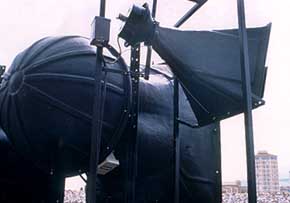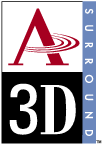According to market research firm IDC, the market for MP3 and other compressed audio players is expanding, both in terms of vendors and the type of new, innovative devices being produced.
According to IDC, worldwide compressed audio player shipments will continue to grow at a torrid pace, increasing at a compound annual growth rate of 51%, from 3.3 million in 2000 to nearly 26 million in 2005. Compressed audio player shipments in the United States will follow a similar growth path, jumping to 18 million in 2005 from 2.8 million in 2000.
“The market for compressed audio players will continue to grow, and it will grow significantly beyond devices resembling the original, portable Rio-like units,” said Susan Kevorkian, analyst for IDC’s Consumer Devices program.
“Because of the cost and capacity constraints of flash memory, an increasing number of vendors and consumers alike are turning to cheaper alternative media to transport their music. This is opening up opportunities for more interesting and innovative products to develop. Toward the end of the forecast, alternative media devices will have a strong worldwide presence.”
IDC says portable systems will continue to dominate the market. By 2005, this segment will comprise 61% of both U.S. and worldwide compressed audio player shipments and more than half of the worldwide market value.
“New product innovations have brought exciting changes in storage capacity and functionality,” said Bryan Ma, senior analyst for IDC’s Consumer Devices program.
“By 2004, we expect portable hard-drive-based jukeboxes to outship basic portables. In addition, MP3 decoding capabilities are increasingly being added into traditional portable CD players, thus enabling them to outship basic portable compressed audio players in the United States by 2003.”
Despite the dominance of this category, IDC believes growth in other form factors, including automotive, home networked receivers, and streaming Internet radios, will occur, although much more slowly. Sales of compressed audio players will continue to be lopsided in favor of the United States; however, non-U.S. markets will gain momentum. “The key factor to watch for in non-U.S. markets is PC penetration,” Ma said.
 1) In the studio, mix files are recorded and encoded, then uploaded to a secure server on the Internet with E-deck Studio.
1) In the studio, mix files are recorded and encoded, then uploaded to a secure server on the Internet with E-deck Studio. Denver, CO. A recent installation at the 53,000 seat Folsom Stadium at the University of Colorado is designed around four Leviathan II horn-loaded speaker systems by Community Professional Loudspeakers.
Denver, CO. A recent installation at the 53,000 seat Folsom Stadium at the University of Colorado is designed around four Leviathan II horn-loaded speaker systems by Community Professional Loudspeakers. Aureal Semiconductor won good reviews for the sound quality of its chip set when it was demonstrated at the AES Convention, and the company is getting a similar response from the less-discriminating (audio-wise) audience at COMDEX. The chip set features Aureal’s ASP301, an optimized DSP engine that provides the company’s Aureal 3D (A3D) spatialization and accelaration support of the DirectSound API; and the ASP311 PCI bus interface chip. The chip set is positioned as an OEM upgrade to existing Sound Blaster cards.
Aureal Semiconductor won good reviews for the sound quality of its chip set when it was demonstrated at the AES Convention, and the company is getting a similar response from the less-discriminating (audio-wise) audience at COMDEX. The chip set features Aureal’s ASP301, an optimized DSP engine that provides the company’s Aureal 3D (A3D) spatialization and accelaration support of the DirectSound API; and the ASP311 PCI bus interface chip. The chip set is positioned as an OEM upgrade to existing Sound Blaster cards. Also at COMDEX, VLSI Technology Inc. introduced its SongBird 3D™ DirectSound Accelerator chip (VL82C829), featuring VLSI’s ActiSound™ positional 3D audio. Like the Aureal chip, this one functions as part of a set. The main SongBird processor is the DSP HRTF engine, with interfaces to Dolby AC3 and MPEG audio processors, plus a separate AC’97 codec made by Sigma Tel.
Also at COMDEX, VLSI Technology Inc. introduced its SongBird 3D™ DirectSound Accelerator chip (VL82C829), featuring VLSI’s ActiSound™ positional 3D audio. Like the Aureal chip, this one functions as part of a set. The main SongBird processor is the DSP HRTF engine, with interfaces to Dolby AC3 and MPEG audio processors, plus a separate AC’97 codec made by Sigma Tel.